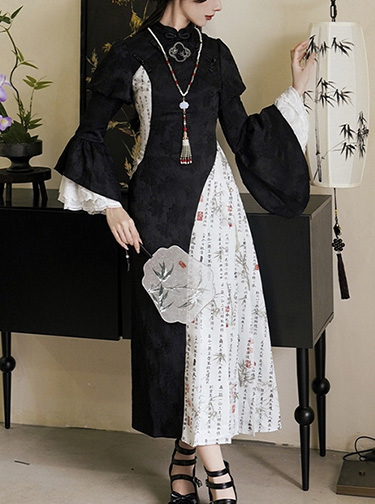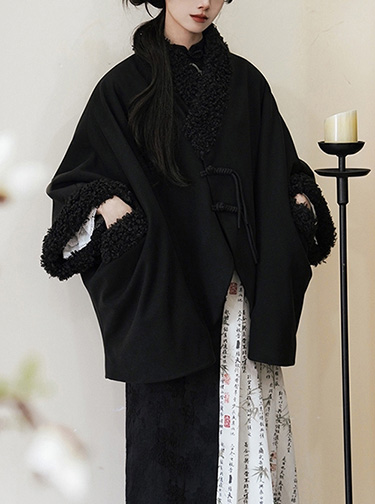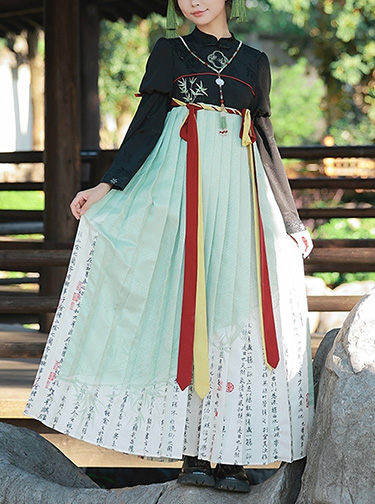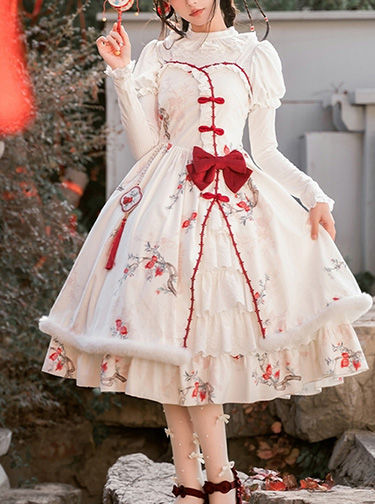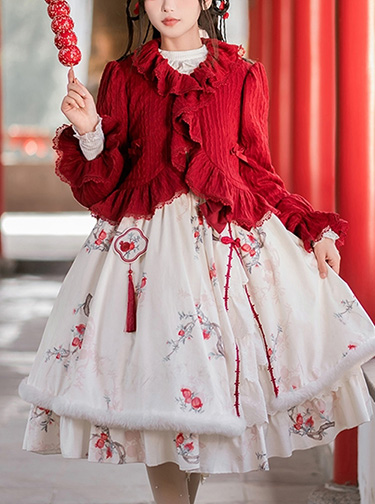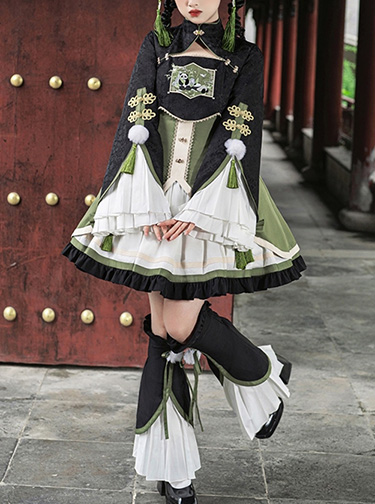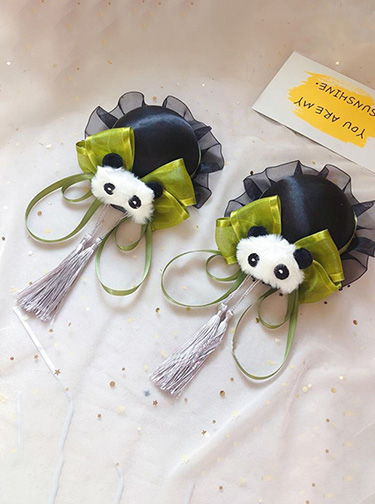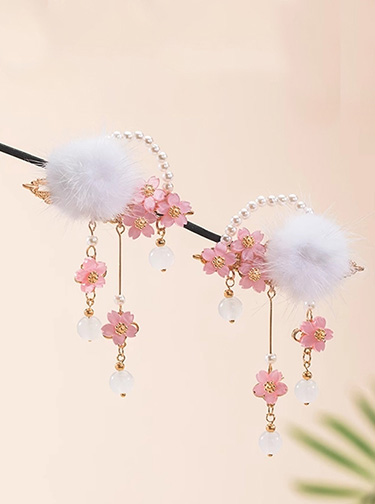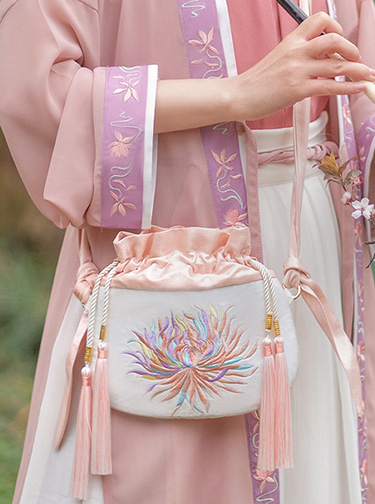Cultural Integration: Discover The Charm Of Chinese Style
When it comes to blending so-called "Western" and "Eastern" fashion, few countries match China in the sense of cultural integration. Discover the charm of Chinese style in this comprehensive style guide for fashionistas around the globe!
The Beauty of Fashion Culture Fusion: Explore the Charm of Chinese Style
Few cultures enjoy a history as rich and illustrious as the Chinese. Happily, this is reflected in the fashion of the country through a number of influences ancient dynasties predating the 17th Century, the trade exchange brought by the Silk Road, Imperial Court Influence (from the 17th to 20th Century), and modern Western influence.
Ancient Precursors To Modern Chinese Fashion
● Hanfu Dynasty: Stemming from the Han Dynasty, Hanfu attire was characterized by intricate embroidery, wide sleeves, and long, loose-fitting robes.
● Ming Dynasty: This was the period that brought simplicity to Chinese clothing, known for producing garments like the qipao (a silk, form-fitting dress).
● Tang Dynasty: Fashion from this era was known to influence neighboring regions with its bright colors, layered clothes, and elaborate hairstyles.
Silk Road Influences
With connections through trade to neighboring areas like Central Asia, Europe, and the Middle East, the Silk Road brought many fashion influences such as Islamic textiles and Persian-style robes to the Chinese marketplace. This exchange of ideas can be seen in the extreme today with increasingly globalized marketplaces and the advent of the internet.
Imperial Court Fashion(From the 17th to 20th Century)
Interestingly, during this time period, imperial decrees dictated that specific fabrics, designs, and colors were to indicate rank. At the time, garb from the Manchu women was increasingly popular, and it became a symbol of femininity in China.
Western Adaptations And Incorporations
While Westernization first became apparent through urban cities like Shanghai and Beijing, it eventually worked its way throughout China and the neighboring regions-though it was particularly popular among the elite class of working urban people. However, in 1949, the Communist Revolution garnered an aesthetic that was modern and utilitarian, emphasized as being desirable over more aesthetic options. In more recent decades, however, China's increasing globalization has led to further fusion of Eastern and Western styles in modern Chinese fashion, with a resurgence of interest in traditional Chinese garb.
Chinese Style Traditional Elements
In traditional Chinese design, a few noteworthy characteristics float to the forefront of our awareness: these are the raised Chinese collar and elaborate buckles for fastening clothing. Particularly for women, the stand-up collar and silver or gold buckles came to represent a woman's chastity in a more conservative concept of Ming dynasty-era femininity. However, during the Qing dynasty, this element of attire was incorporated into clothing worn by both the Chinese and the Manchu and became one of the most widely accepted and recognizable characteristics of Chinese fashion. This collar is sometimes referred to as the "Mandarin collar", or the "Mao collar"(from Business of Fashion).
The Chinese knot and buckle knot, on the other hand, became synonymous with symbols of blessings and beauty, and it was associated with "keeping records by tying knots". What's more, there are five main colors associated with symbolism in Chinese fashion. Associated with luck, red brings feelings of joy, happiness, and vitality. Yellow is the royal color of China and is associated with prosperity and power. Qing is a combination of blue, black, and green, and represents health, advancement, and healing-and black can be either lucky or unlucky (though its unlucky connotations come from its associations with evil). White balances black with the symbolism of mourning or purity.
We cannot talk about colors without bringing up the topic of embroidery. One of the oldest handicrafts with a history reaching back over 2000 years, the Chinese have been known throughout history for their intricate needlework. However, they are noted to have reached their peak popularity during the Ming and Qing dynasties.
Incorporate Chinese Elements Into Everyday Fashion
Fortunately for the fashion enthusiast, it has never been easier to incorporate Chinese elements into everyday attire. Here are some of the ways you can bring traditional Chinese garb to life in a modern era:
● Cheongsam: Want to elevate your fashion game while still feeling feminine and flowy? This wardrobe choice offers intellectual elegance to any closet, particularly this black and white cheongsam coupled with this plush Lolita cloak featuring Chinese-style tassels knots.
● Hanfu: This hanfu-inspired black and green embroidered dress features a Confucian skirt and flowing layers and a nod to the traditional Chinese stand-up collar.
● Chinese whimsy: If you're looking to add a dash of whimsy to your attire, look no further than this classic Lolita bowknot dress featuring traditional Chinese clasps. Don't forget to stay warm with this knitted ruffled cardigan!
● Ancient Chinese dynasties incorporated in one dress: If you're really looking for a way to embody the history of Chinese fashion, you'll want to take a look at this Hanfu dress coat with leg sleeves. Featuring a nod to the traditional raised collar as well as the elaborate knot buckles, this cute dress features an embroidered panda and green accents to nod toward your health and vitality!
4.Chinese-Style Accessories
Want to reference the elaborate hairstyles and lavish style of the Chinese elite in centuries gone by? This Chinese style chunli hairpin features a cheongsam fringe and two cute pandas. If that's not your style, try this fluffy pink and white hairpin featuring hanfu crystal beads! Such delicate beadwork is sure to turn heads! Finally, no look would be complete without a bag. This elastic-cord crossbody hanfu bag features an embroidered pink lotus-a nod to China's longstanding history with the needlework craft!
All in all, China has a rich history offering deep symbolism and a dedication to fine detail work-both in terms of the noteworthy buckle knots, the characteristic high collar, and the vibrant embroidery gracing many fabrics and garments. If you are interested at all in the history of fashion, you cannot consider yourself an aficionado without also having a working understanding of Chinese influence on clothing throughout history as well as the Western

